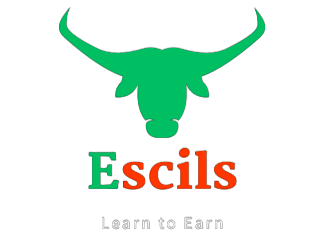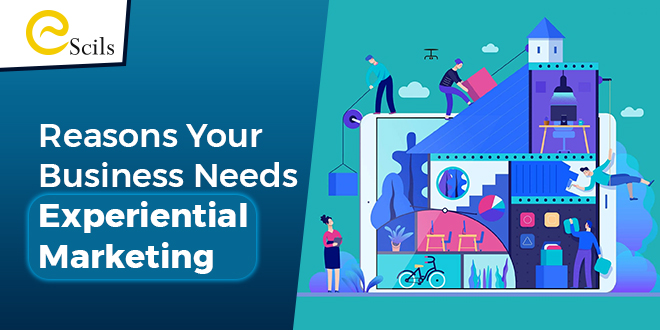Experiential Marketing is called “Engagement Marketing” or “Loyalty Marketing.” You may again hear terms such as “Event, On-ground, Participation or a more popular Live Marketing. This brings us to the question “what is Experiential Marketing?”.

Well, it’s all business as it’s a marketing strategy that works on directly engaging clientele, encouraging and inviting them to partake in the growth and evolution of a brand and a brand’s experience. This way of approach of business relies on consumers for feedback and receivers of messages. This business tactic preaches that consumers should partake in the growth and actively participate in the production of marketing programs. This co-creation results in a developing relationship with the brand.
The definition of experiential marketing:
Experiential Marketing comes in many forms. Most marketers will give you their view of this marketing approach. Although these activities may look like random happenings, they hardly ever are. These tactically planned events are curated carefully to reach consumers and teach them about brand awareness. This is a top-notch way of letting audiences know of your products, but not many can afford these types of promotions.
Why Experiential Marketing is the future of Business:
One of the most important aspects of promoting your business is marketing campaigns and your reach depending on your engagement. Your marketing campaign should be well executed as a bad Experiential Marketing campaign risks looking like a publicity stunt or a repetition of the product and overselling. Consumers don’t appreciate repetitive ads and brands pressuring them into making purchases. This type of event could blacklist and set your image in the industry back to square one.
Experiential Marketing campaigns take longer to plan and execute, and their results are far more satisfying than those from digital campaigns. One of those rewards from these campaigns is that they can give you more customers who are willing to be long-term consumers.
Experience brings value:
The first step of strategically planning an experiential marketing campaign is to leave behind digital marketing strategies. Marketing mediums of email, social media, and content marketing are all viable options. Similar forms of advertising can also be utilized. Still, they do not personalize your customers’ experiences and won’t build the level of real interaction between the brand and consumer that experiential marketing is aiming for.
The traditional marketing method can only get you to provide data on potential customers from an established customer basis. These tactics are either only visual or verbal and don’t resonate with the customer on a deeper level.
On the other hand, Experiential Marketing can be called a 3D version of a marketing campaign. It dives into the branch easier and faster than one could through a screen.
Here are reasons your company needs experiential marketing to succeed in 2021.
Customers love experiences:

Experiential marketing is focusing on making memories for the customers. With progressing time, customer preferences change, and they no longer want to spend money on just tangible things. A recent study within millennials showed that two-thirds of the study’s results said they felt far more fulfilled by live experiences than by purchasing items of the same expense. Most consumers want to spend their earnings on moments and making memorabilia and move further tangibility.
Personalized experiences.
Personalized experiences are hard to forget from the customer’s point of view. It can’t be like every other brand a consumer might engage with. They would want an experience made just for them like. In this study done by Oracle, they found that about 46% of shoppers will be making more purchases from a retailer when the experience is personalized. Consumers respond positively as long as they are personal, up close, and real.
Positive experiences lead to brand buzz:
It’s an obvious and known fact that offering memorable experiences increases the chances of being a loyal customer and remembering the brand in the right words. This will also result in the consumer likely to do business with you again. Of course, this is good for your brand because it is cheaper and much easier to keep your old customers satisfied than to attract new ones. This is where Experiential marketing comes into play as it’s the way to boost your brand recognition resulting in customers’ keep coming back for more and ultimately share their experiences leading to brand buzz.
Your narrative:

Experiential marketing is a way of sharing your narrative and telling your story while including your clients in the process. There have been and continue to be many brands that have succeeded through a thorough marketing campaign and selling their lifestyle they believe is suitable for their brand, such as Guinness Beer, who stuck with the not ” Settle for ordinary” life. Their campaign was youthful, tasteful, and elite, catering to their ideal audience and clientele. This was the life their consumers aspired to consume, and that is what sold similarly according to your brand and what you’re voicing; get it right. The story that you are pitching to your customers makes sure what they want is the product you are offering.
Bottom line: tell your story and make sure it catches the right eyes. Make your client want to be a part of your brand and its goal.
Social media:

Social media handling is an essential skill to hone while running a business or a brand. It is of preference to reach your client when marketing. It can be a personal way of communicating with your customers. Social media sites such as Instagram, Snapchat, and going live can offer meaningful insight into the brand on each platform and can even let the audience market the brand themselves. Using social media can expand your demographic by a ton and open doors and possibilities. Marketing is made more interactive and hands-on. This, of course, results in inaccurate data from the customer, also letting your brand expand in the headspace given and so. This experience can be very fruitful. An example of this can be Visuals Fizz, which scattered engaging content throughout social media with excellent results. To receive such positive feedback regarding social media, we can put time and energy into advertisements, images, and videos, which can emphasize the bond of your brand and let it resonate with the audience.
These are some highly effective ways social media can be honest and used as a tool to promote and move forward with your brand. Catchy tunes and themes, hashtags, trivia, photo content, giveaways, polls, and such can be perfect for catching your preferred audience’s attention. Even teasing exclusive looks can excite and codes for promotional offs are always worth it.
The bottom line that social media is your best friend side by side. It can be the simplest way to take your brand to the top making your consumers interested in your content without feeling like they are being advertised.
Interactive Marketing:

In a modern world, you need modern techniques. People have moved past targeted ads and know when they’re being advertised. Advertising shouldn’t feel like the audience is being sold to but more like an experience of a memory. Instead of guessing who your audience is or what they would be intrigued by, you could have real-time information about your campaign. Consumers teach us a lot about how to sell what we are selling to them via smart devices. Most of the time, they advertise for branded events taking videos, and spreading them further. The more you interact with your audience, the more you know of them and use it to your branding advantages.


